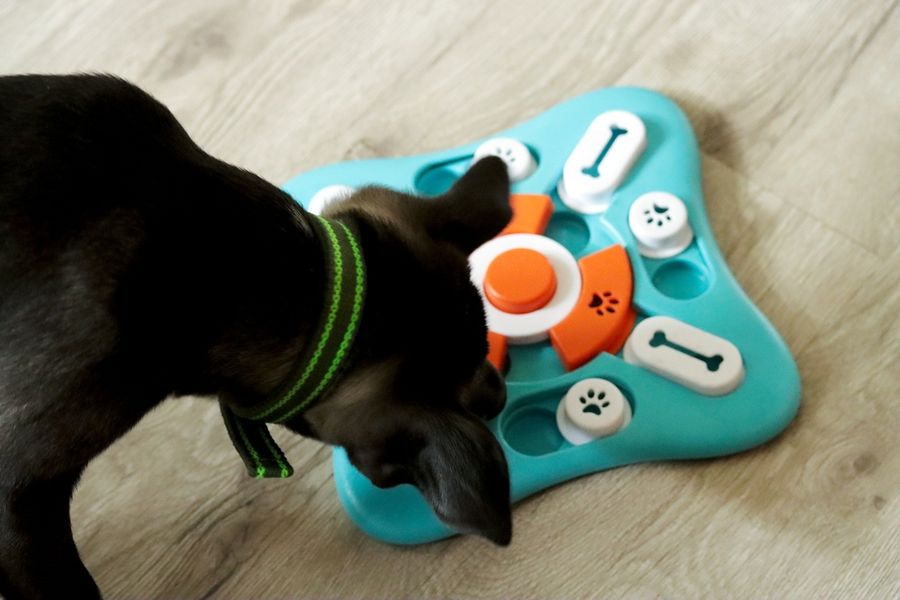Mental stimulation plays an important role in your pet’s overall happiness and behavior. Pets thrive when they have opportunities to think, explore, and engage with their surroundings. Without enough enrichment, boredom may lead to unwanted habits or restlessness. Providing varied forms of stimulation helps strengthen confidence and curiosity. With simple, creative activities, it becomes easy to support your pet’s emotional well-being while helping them stay active and content at home.
Creating an Environment That Encourages Exploration
A stimulating environment can make a significant difference in your pet’s daily routine. Rearranging furniture, introducing new textures, or placing safe objects around the home encourages exploration. These small changes keep their surroundings interesting and offer ongoing opportunities for discovery. Curious pets often feel more engaged when their environment evolves from time to time.
Interactive spaces help build confidence and reduce boredom. Designating areas for play or rest supports your pet’s natural instincts to investigate and relax. Many pets enjoy cozy nooks, window views, or soft blankets that create a sense of security. An enriching environment helps your pet feel more comfortable, active, and mentally engaged.
Engaging Your Pet With Interactive Toys and Challenges
Interactive toys provide an effective way to stimulate your pet’s mind. Puzzle feeders, treat-dispensing toys, and toys that encourage problem-solving offer rewarding challenges. These activities require focus and patience, helping pets stay mentally engaged during the day. Rotating toys periodically keeps them feeling fresh and exciting.
DIY challenges can also support cognitive development. Hiding treats around the home or creating simple puzzles using boxes or towels encourages natural instincts. These activities allow pets to think independently and use their senses. Interactive play strengthens the bond between you and your pet while satisfying their need for mental enrichment.
Incorporating Training Sessions Into Daily Routines
Training provides purposeful mental stimulation and helps reinforce positive behaviors. Short, consistent sessions allow pets to practice new commands or skills without feeling overwhelmed. Training builds trust and understanding, creating a stronger connection between you and your pet. It also helps improve focus and responsiveness.
Variety is key to keeping training interesting. Teaching simple tricks, practicing obedience skills, or introducing new cues provides engaging challenges. Many pets enjoy the sense of accomplishment that comes with learning. Over time, training becomes a rewarding part of daily routine that encourages confidence and mental growth.
Encouraging Natural Behaviors That Support Mental Activity
Pets benefit from activities that allow them to express natural instincts. For dogs, sniffing, chewing, and searching offer meaningful stimulation. For cats, climbing, scratching, and stalking play fulfill important behavioral needs. Providing opportunities for these instincts helps prevent boredom and creates a healthier, more satisfying daily routine.
Simple additions can make a big difference. Chew toys, cat trees, scratching posts, or scent games help pets explore their environment in fun, enriching ways. When pets have outlets for natural behaviors, they feel more relaxed and mentally balanced. Supporting instinctive play leads to happier, more confident companions.
Strengthening the Bond Through Quality Playtime
Playtime offers more than physical movement—it also provides important mental enrichment. Games like fetch, hide-and-seek , wand toys, or gentle wrestling engage your pet’s attention and imagination. Interactive play encourages problem-solving and helps pets burn excess energy. These moments create positive associations that support overall well-being.
Meaningful play also deepens your relationship. Pets who feel engaged and connected are often more confident and secure. Setting aside time each day for focused interaction reinforces trust and affection. Quality play strengthens emotional bonds while offering vital mental stimulation that keeps pets content at home.
Introducing New Scents and Sensory Experiences
Scent-driven activities offer powerful mental enrichment, especially for pets who rely heavily on their sense of smell. Placing safe, pet-friendly scents around the home encourages curiosity and exploration. For dogs, scented toys or gentle scent trails can provide rewarding challenges. Cats often enjoy new textures, crinkly materials, or subtle herbal scents like catnip or silver vine. These sensory experiences help keep the mind sharp and engaged.
Changing sensory elements occasionally adds novelty without overwhelming your pet. Rotating scent-based toys or offering new textures allows them to explore different sensations at their own pace. Sensory enrichment stimulates natural instincts, encourages thoughtful exploration, and reduces boredom. Engaging the senses helps create a more dynamic environment that supports mental activity throughout the day.
Supporting a Happy, Stimulated Pet
Keeping your pet mentally engaged enriches every aspect of their life. Simple activities, playful routines, and thoughtful environments encourage curiosity and confidence. As your pet explores new challenges, they develop stronger bonds, healthier habits, and greater emotional balance. Mental stimulation becomes a key part of nurturing a happy companion. With consistency and creativity, you can create an enriching home that supports your pet’s well-being each and every day. Small efforts made regularly can transform your home into a place where your pet feels inspired, fulfilled, and deeply connected to you.


